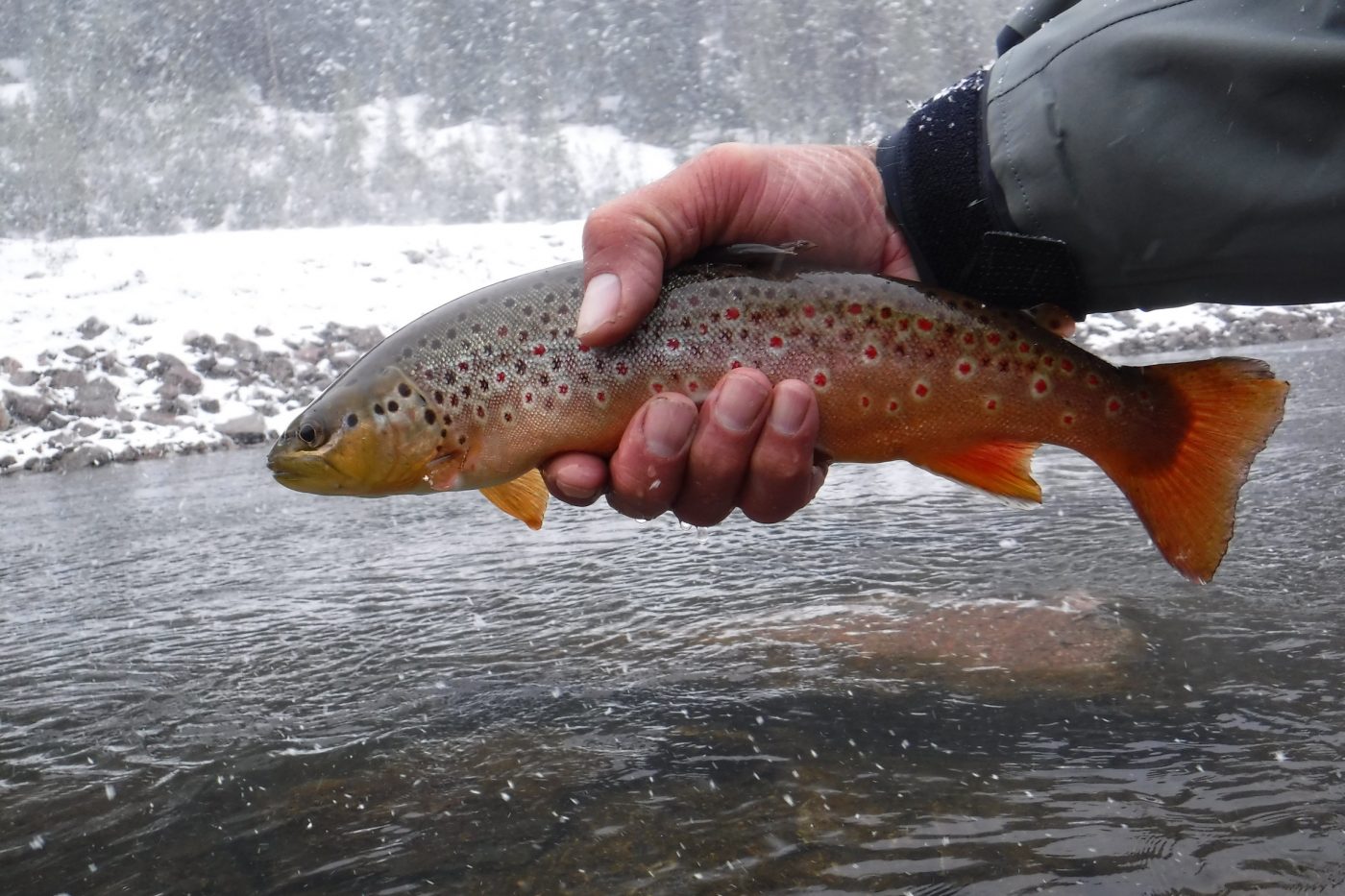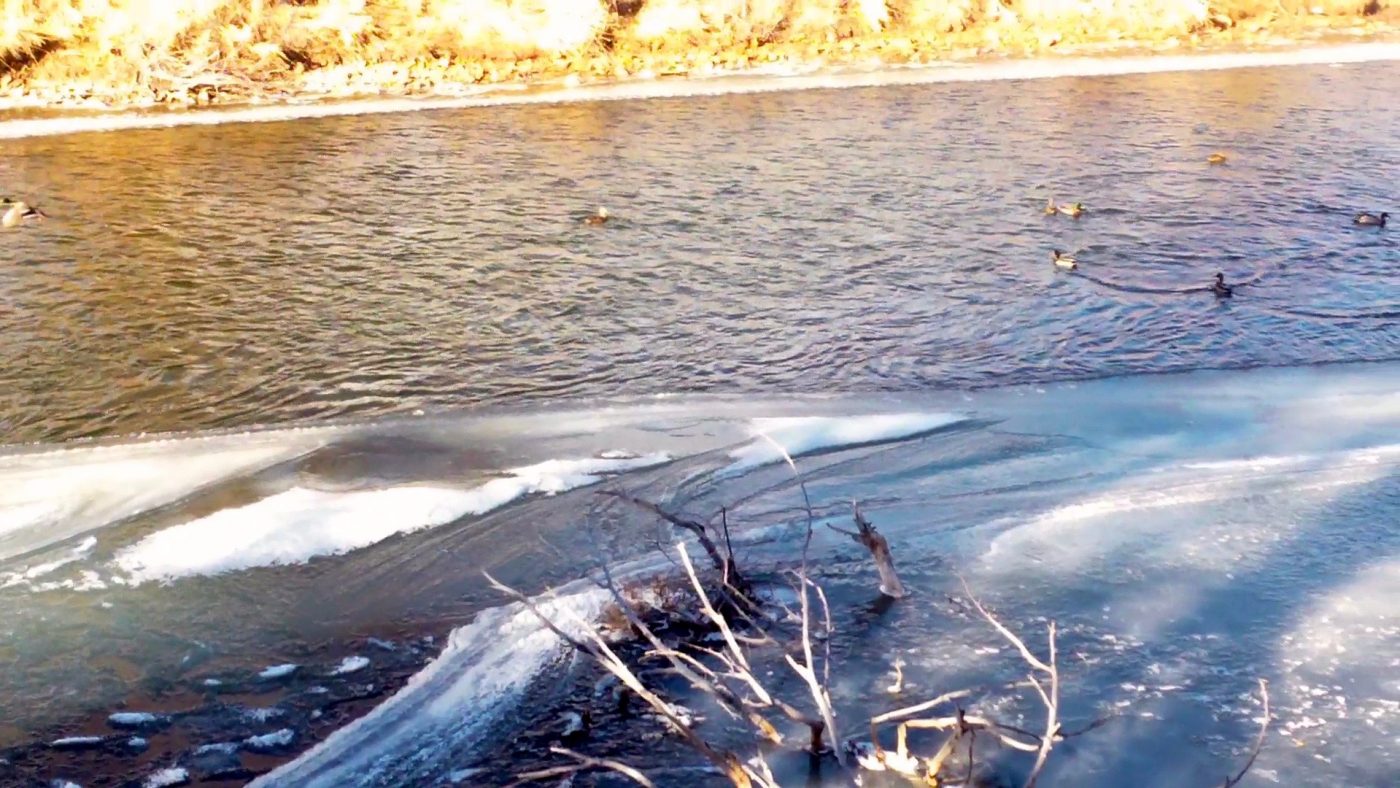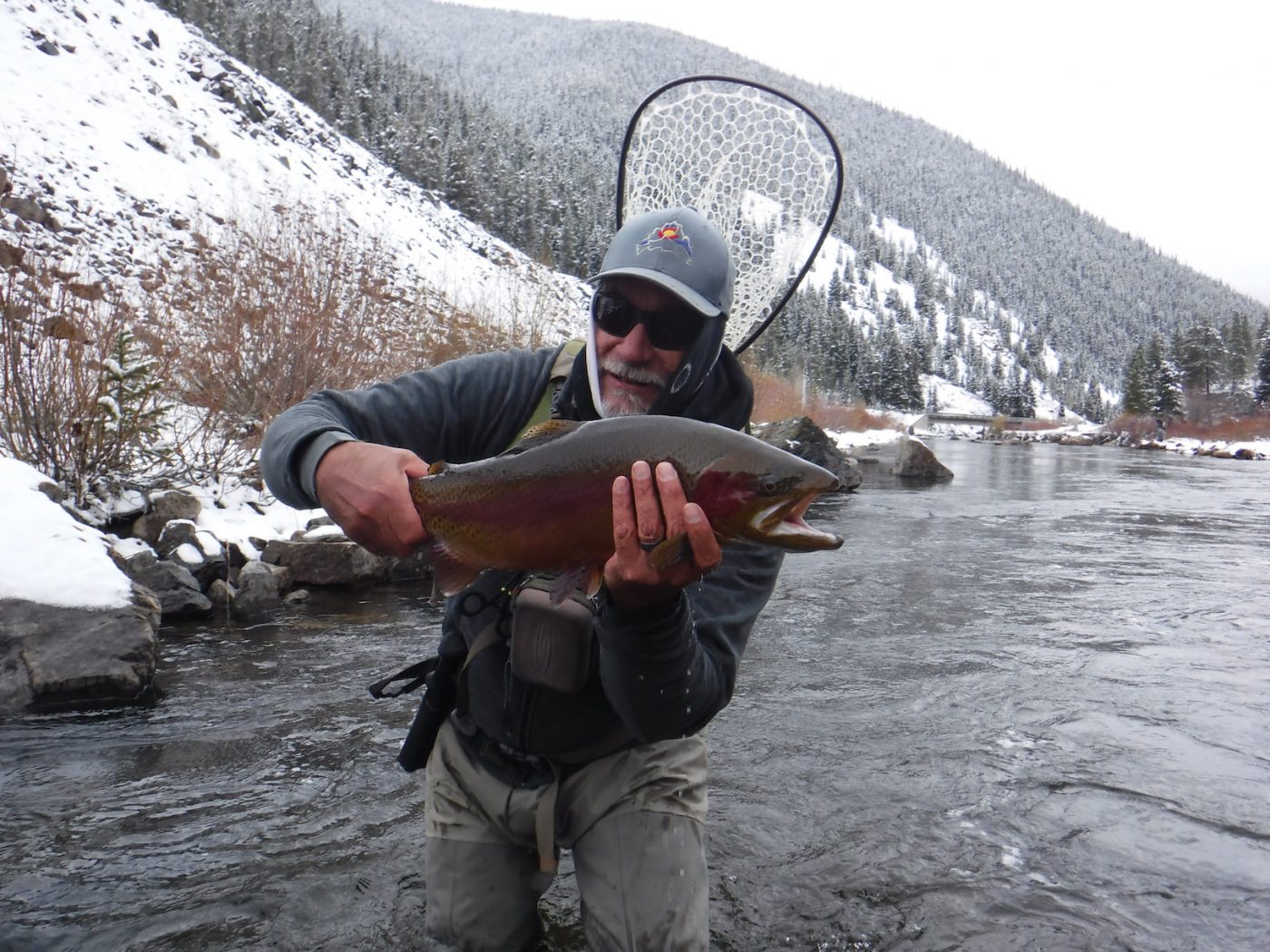The Secret Season: Winter Safety on Our Tailwaters
Part of our series on Colorado Backcountry Safety Awareness Week
When Jon Easdon, our Director of Services, and I got out of his car recently at a local fishery, the thermometer dipped around ten degrees. Ahh…winter conditions on the tailwater. It got us talking about how to approach winter fly fishing in a safe way. It’s not a backcountry experience, but winter fly fishing takes an extra bit of awareness on the angler’s part to be safe while enjoying what we call “the secret season.”

Fly fishing during the winter months, and I include late fall and early spring in this, can be deceptive.
Clear blue skies are inviting, but without the cloud cover over night, the temperatures will drop even if the daytime high is reasonable. Because of these swings in temperatures, it’s important to dress in layers. It’s much easier to stay and keep warm rather than to try and warm up once you get cold. While some anglers like to put their waders on for the drive to the river, I’ve never been a fan of that strategy. Sometimes the drive to the river, in waders and with the car’s heater on, can actually make me a little sweaty and I don’t want to start the day on the river like that. What I will do is put my waders and boots in the truck to warm them up during the drive. If I am driving alone, I’ll put them in the foot-well of the passenger side.
Another deception of winter fly fishing is found along the river’s edge. Anglers have to be extra cautious to make sure that they are walking the firm ground of the bank rather than stepping onto an icy covering on the river itself. The air between an undercut bank and the river can be more shaded and colder and cause that part of the river to freeze up. Sometimes, the icy buildup can actually be an overhang from the bank or stretch further out onto the river. Or those little nicks and cuts into the bank may look like terra firma but are actually a thin layer of ice on the water. Similarly, along the very edge of the river on a rocky or sandy bank, an icy layer may lie under a thin snowy surface. These icy layers might just make for unsteady footing and some slips. But in the worst case scenario, they can crack and break giving the angler a cold, unexpectedly deep step, or even a full-body plunge, into the creek.

Which brings us to the risk of hypothermia. Cold temperatures plus damp clothes equals hypothermia. One of our Shop employees took a plunge in the Arkansas River a few years ago at the Shop’s annual team-building adventure on New Year’s Day in Pueblo. [The dude is a far better blog writer than winter angler.] The fall soaked his upper body and some water trickled into his waders. Although the air temperature was not horrible, the combination of wet clothes, wet skin, and cold temperatures resulted in the first real symptom of hypothermia: shivering. When shivering intensifies, it is the body’s attempt to warm itself, but it also causes more rapid fatigue. Other early symptoms include hunger, dizziness, nausea, and lack of coordination. After that, the symptoms include disoriented and irrational thinking, drowsiness, slurred speech, and a weak pulse and shallow breathing. Hypothermia is a very real threat in the winter.
What are the safety measures we can take and what gear might be good for winter fly fishing?
Appropriate clothing is essential. Put away all of your cotton clothes until the summer; winter is not the time for cotton anything. Layering is the most important aspect for winter conditions. We have devoted full blogs to effective layering techniques and appropriate fabrics.
A special shout-out to head coverings. The prepared angler needs more than just the cool baseball-style hat from the Montana trip last summer. Wool hats (more here) over or under that cool fishing hat, a balaclava, and hooded jackets are crucial. Your head is actually a huge source of heat loss and the right head covering is a necessity.
Latex gloves to protect your hands from wind and water is a great option. They are also safer for handling fish than wool or other fabrics.
In terms of equipment, some anglers accessorize their boots with aluminum cleats for a little more traction. Some anglers carry a wading staff for one extra point of contact on icy banks and snowy slopes. A long-handled net can also serve in this way.
I believe in tucking a small towel into my pack (I carry Fishpond’s Bitch Creek Pack for more room). In addition, back in my truck, I will have a towel and a bag of old, extra clothes in the event I (or a fishing partner) gets wet. I have extra sweatshirts and sweatpants, socks, and long-sleeved shirts. I don’t want to ride home in wet clothes if I do take a spill, and I want to have dry clothes available if my fishing day comes to an abrupt halt.
One last thing: stay hydrated and fueled. Winter conditions are no time to skip breakfast or to leave those power bars, breakfast bars, or other snacks at home or in the truck. A well-fueled body means a warmer body. And, just like in warmer temperatures, it is important to stay hydrated.
Part of the deception of winter fly fishing is that an angler may not be far from the car – so how great can the risk be? It’s not like we’re in the backcountry or at a high alpine lake. But with winter, conditions are different and can take a very quick turn. Be prepared. Take on the challenge of catching that December or January fish. And have fun in “the secret season.”

